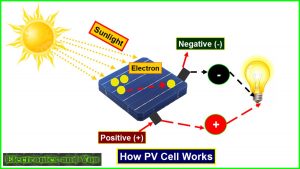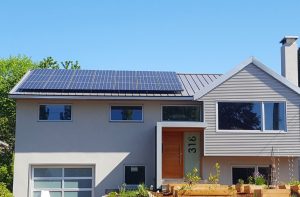Assignment Introduction
In this assignment, we need to select a technical term from our professional field, and then explain the term to the audience who does not professionally know the field. The objectives of this assignment are:
- Understand the significance and role of definitions in technical writing.
- Recognize how audience and purpose indicate the need for definition
- Distinguish the difference between the levels of details in the definition
- Choose the appropriate level of detail for the situation.
Term
Solar Photovoltaic panel
Reading Situation
A technician popularizes the technology of solar photovoltaic panels to the public.
Parenthetical Definition
The solar photovoltaic panel (a board that converts solar energy into electricity for buildings) has been popular in Canada in recent years.
Sentence Definition
A solar Photovoltaic panel is a piece of equipment being put on roofs so that the panel could absorb sunshine and convert solar energy into electrical energy (Sulaiman, S. A., Hussain, H. H., Leh, N. S. H. N., & Razali, M. S. (2011)). The term “photovoltaic” is derived from the words “photo” from Greek, which means light, and “voltaic” stands for voltage, a parameter of electrical current. Photovoltaic (PV) technology is proven and easy to use solar energy to generate electricity (Rehman, S., Bader, M. A., & Al-Moallem, S. A. (2007)).
Expanded Definition
History
The history of the solar PV panel begins in 1839 when Alexandre-Edmond Becquerel observed that certain materials can create electricity from sun exposure. In 1954, a research team at Bell Labs created solar cells, which became the main necessary component for producing solar PV panels, which became commercially viable in a global market by the 1970s. (Prudhvi, P., & Sai, P. C. (2012, May)).
The principle of solar PV panels
Solar PV panels are composed of solar cells, a special material that can convert solar energy into electricity. When solar cells are exposed to the sunlight, the electrons in cells, negatively charged subatomic particles, are boosted and jumped up because the sunshine is energizing them. This movement of the electron as a result of added energy creates two charge carriers, which create an electric current in the cell eventually.
Figure1 How Solar Photovoltaic Cells Work
Source: http://www.electronicsandyou.com/pv-cell-working-principle-how-solar-photovoltaic-cells-work.html
What is needed to make the solar PV system work?
A typical solar PV system needs two major components: solar panels and inverters. Solar panels convert solar energy into electrical direct current and inverters convert the direct current into alternating current, so that the energy from the sun can be used to energize appliances, such as lights, fridges, and freezers. How many solar panels are included in the system decides how much energy you would have eventually. A 5 kW residential PV system usually needs 14 solar panels.
Figure2 How does residential solar PV panels power homes
Source: https://www.dysonenergysolar.com/why-go-solar
Why install residential PV panels?
- A significant benefit to PV installation is a lower energy bill. Less dependence on the local utility usually stands for stability in the drastic rise of electricity rates.
- Generally, a residential solar system will pay off within 8 to 15 years and the system itself will last at least 25 years. That means you can have at least 10-17 years of free power in BC!
- Coal produces 25 times more carbon dioxide than solar energy to produce the same amount of energy so solar PV panels overall reduce carbon emissions and provide a positive net environmental impact (Sulaiman, Shaharin A., et al. (2011, April)).
Figure3 Residential solar PV panels in practice
Source: http://terratek.ca/
Conclusion
Solar PV panels cut the energy needs from the local utilities, reduce electricity bills for homeowners, and protect the environment by reducing carbon emissions. This technology will be more popular across the world.
References
Prudhvi, Potuganti, and Ponnapalli Chaitanya Sai. “Efficiency improvement of solar PV panels using active cooling.” 2012 11th International Conference on Environment and Electrical Engineering. IEEE, 2012.
Rehman, Shafiqur, Maher A. Bader, and Said A. Al-Moallem. “Cost of solar energy generated using PV panels.” Renewable and sustainable energy reviews 11.8 (2007): 1843-1857.
Sulaiman, Shaharin A., et al. “Effects of Dust on the Performance of PV Panels.” World Academy of Science, Engineering and Technology 58.2011 (2011): 588-593.



Leave a Reply